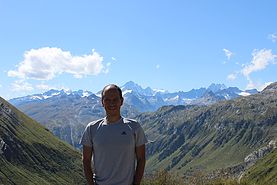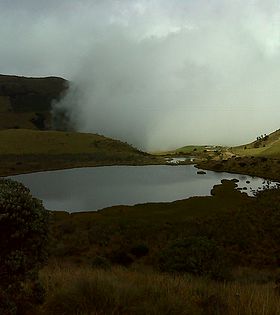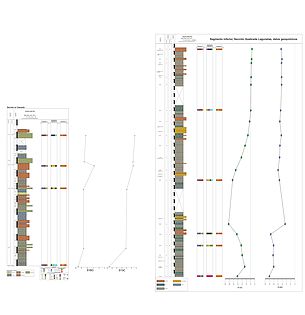Research

Our research also extend into 1) Holocene paleoclimate evolution along the Neotropics and its consequences on the pre-Hispanic cultures, 2) evolution of the Cenozoic continental sedimentary record along northern South America and its bearings on the Neotropic climate and northern South America paleogeography.
News

Two of Our Members Began Ph.D. Program this Fall at the UNIVERSITY of HOUSTON
Carolina Ramon is a new PhD student at the EAS Department of the University of Houston. Carolina will be applying novel multi-isotope proxies (Mo and U isotopes, Fe speciation) to quantify changes in ocean dissolved oxygen during the Cretaceous. She will be focusing on the Central Colombia Cretaceous Sea, a unique analog of the modern Black Sea.
Lucien Nana Yobo is a new PhD student at the EAS Department of the University of Houston. He received his Bachelor Degree in Geology from the Fresno State University and his M.Sc. in Geology From University of Nebraska LincoLn. Nana is focusing on Marine Carbonate Succession and characterizations of potential Hydrocarbon Reservoirs

Closure of the Panama Seaway occurred earlier than previously though. Discover challenges paradigms of modern climate and biologic evolution.
The closure of the Panama Seaway has been for long time considered to have occurred 3 million years ago. The closure of the Panama Seaway, which separated the Pacific from the Atlantic oceans, has been associated to one of the biggest biological exchanges in Earth history, i.e. the Great American Biological Interchange (GABI). The closure of the Panama Seaway during the Late Pliocene has been also considered as triggering the expansion of northern hemisphere glaciers and as one of the major mechanisms leading to the onset of the modern climate. Timing the closure of the Panama Seaway, however, has been a topic of great debate among the scientific community. Determining the precise timing of such closure is vital for understanding the establishment of the modern climate and the evolutionary pathways of modern Inter-Americas biodiversity.
Assistant Professor Juan Carlos Silva-Tamayo from the Department of Earth and Atmospheric Sciences of the University of Houston participated on a research that focused on the precise timing of the interaction between Central and South America and on the closure of the Panama seaway. Results from this research, which have been published on the last volume of the Science Magazine, suggest that the final closure of the Panama Seaway took place 15 to 13 million years ago and not 3 million years as previously though. The early closure of the Panama Seaway opens new questions about the evolution of the Inter-Americas fauna, specifically about the precise paths that controlled the Great American Biological Interchange. It also opens questions about the actual mechanisms triggering the expansion of northern hemisphere glaciers since 3 million years ago. According to Professor Silva-Tamayo, the early closure of the Panama seaway may explain some evolutionary pathways of the marine life along the Caribbean; i.e. a major extinction and wipeout of Caribbean coral reefs between 13 and 10 million years ago.
In this research participated scientist from the Washington State University, Smithsonian Tropical Research Institute in Panama and several universities in Colombia.

Three of Our Members Began Ph.D. and M.S. Programs at the UNIVERSITY of HOUSTON
Manuel Paez is a new PhD student at the EAS Department of the University of Houston. Manuel is currently sponsored by the Colombian Research Council, Colciencias (www.colciencias.gov.co). He is investigating how changes in ocean oxygenation during the Cretaceous, i.e. the Ocenaic Anoxic events, affected the marine life in tropical seas.
Deniz Erdal is a new Msc student at the EAS Department of the University of Houston. Deniz is sponsored by the Turkish Petroleum Company and is investigating changes in the Eocene-Miocene carbonate factory in Jamaica. He is using multy proxies to further investigate the causes of the Miocene Carbonate crash along the Caribbean

Juan Carlos Silva-Tamayo New Assitant Professor at the UNIVERSITY of HOUSTON

Congratulations to Juan Carlos Silva-Tamayo for accepting the assistant professor possition in sedimentary geology at the Department of Earth and Atmospheric Sciences of the UNIVERSITY of HOUSTON




